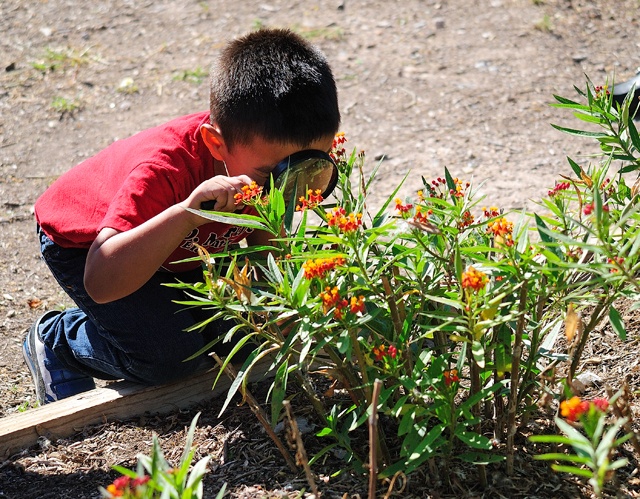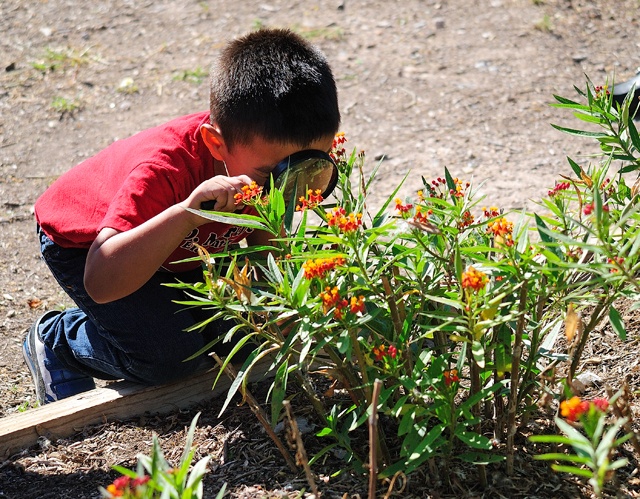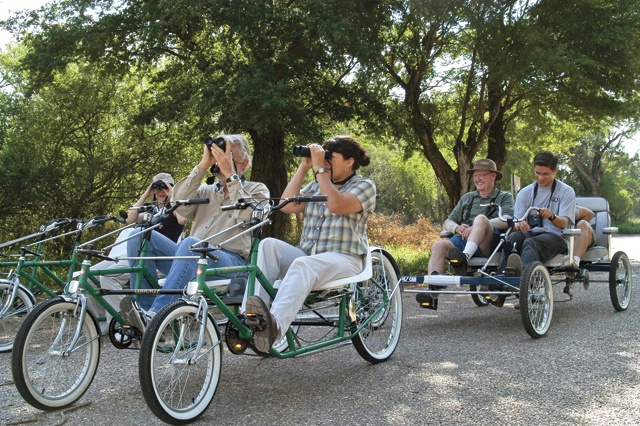The Rio Grande Valley sits at an ecological crossroads where the Gulf Coast, Great Plains, Chihuahuan Desert and a subtropical climate converge. It is a mecca for birders and butterfly watchers alike. They flock to destinations like the National Butterfly Center and Bentsen-Rio Grande Valley State Park in Mission with hopes of spotting a new species. The two destinations are part of a major bird (and bug) migration corridor. As Max Muñoz, grounds manager for the NBC told me, South Texas is a funnel: They all have to come through here.
I purposely wore a light color in hopes that many butterflies would choose to light on me, but those hopes were dashed when I arrived at the NBC and learned that because of the cool, gray skies, I’d likely see much of nothing.
After seeing only queens and a few monarchs, I made my way up to Muñoz, and voiced my disappointment. After a crash course in lepidopterology, Muñoz urged me to come back on a sunny day. The NBC caters to many of the fluttering creatures including those that like nectar (with flowering plants), sap (lots of trees) and rotting fruit (logs filled with overripe bananas, imported beer because it isn’t pasteurized and brown sugar).
“That’s why you’ll find so many species here every day, except for today,” Muñoz said. “Today, you may see 10 to 15 different species. On a sunny day? Up to 100. They have to have sun to warm and dry their wings before they take flight.”
About 210 butterfly species have been recorded at the NBC, and a handful of them were recorded for the first time in Texas. Next trip, I’m checking the weather and won’t be excited (like I was this time) when the forecast calls for gray skies.
Just a stone’s throw from the butterfly center sits Bentsen-Rio Grande Valley State Park. I visited in the evening for the Creatures of the Night tram ride, where Javier de Leon, park biologist, and park host Bill Winchester took about 20 of us into the depths of the park to look for nocturnal creatures.
The tram took off at sunset, a special time of day, de Leon said, because that’s when the crepuscular animals—those that are active during dawn and dusk—make their appearance. As we pulled into the park, de Leon imitated—perfectly—the screech owl and the common pauraque, two birds that like to come out at night. Seconds after he did that, several owls voiced their presence. Whooo! Whooo! After a brief conversation with the birds, we were on our way.
We came to a quiet stop near the resaca in the center of the park to hunt for bats. The cool night air hummed with the sound of a million crickets. “Good sign,” de Leon said. “Insects mean food. And food means animals.”
After bat hunting proved to be mildly successful (we heard a few on de Leon’s ultrasonic bat detector), we went on a short hike. And then he said it: “I’m going to teach you guys how to hunt for spiders.”
Surely at that moment everyone heard my stomach drop to my knees, which buckled. “I can’t think of anything that would thrill me less,” I managed to whisper.
Throughout the evening, de Leon had been shining his flashlight down the roads and into the trees, looking for “eye shine,” which would signal a nearby critter. You can tell a critter by the color of its eye shine, de Leon said, and spiders had an eye shine, too.
“Here, take my flashlight,” he said, handing me the behemoth beam. “Hold it up to your temple, and shine it over the grass.”
A bit trepidatiously, I obliged. And there they were, dozens of creepy little green diamonds in the weeds. And interestingly enough, I wasn’t scared. I was exhilarated. What else could we find? Well, scorpions love trees, apparently.
“Take a look at this,” de Leon said, directing our attention to the ground with a black light. And there it was, glowing in its venom-tastic glory. (Yep. Scorpions glow an unnatural neon blue under a black light.) Awesome.
While the trek ended up being a “slow evening,” we did catch a few raccoons raiding a bird feeder and a couple of Eastern cottontails hopping along the roadway. We heard a chorus of excited coyotes that sounded like they had a successful hunt. And at the end of the night, I further erased my fear of all things crawly and let a walking stick amble up my arm.
——————-
Ashley Clary-Carpenter, field editor



